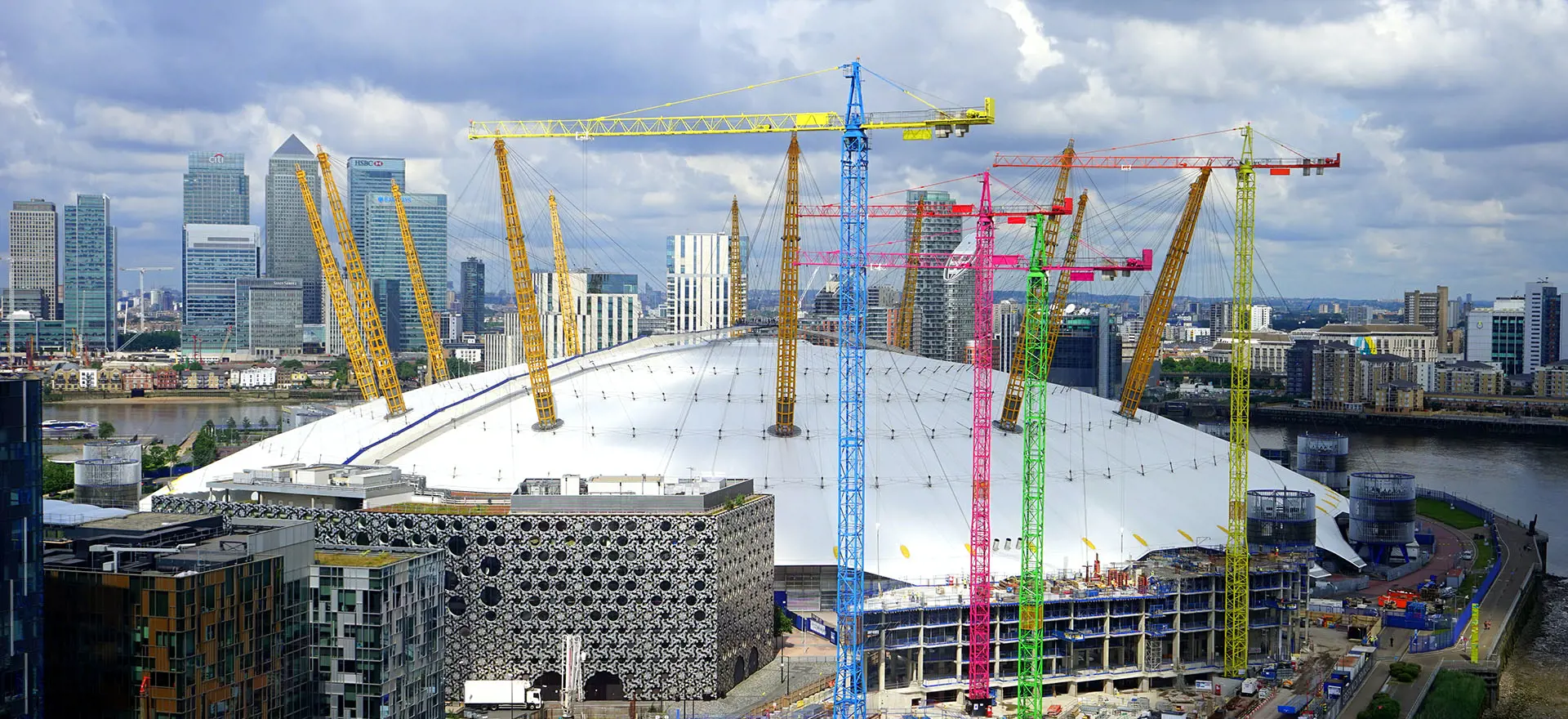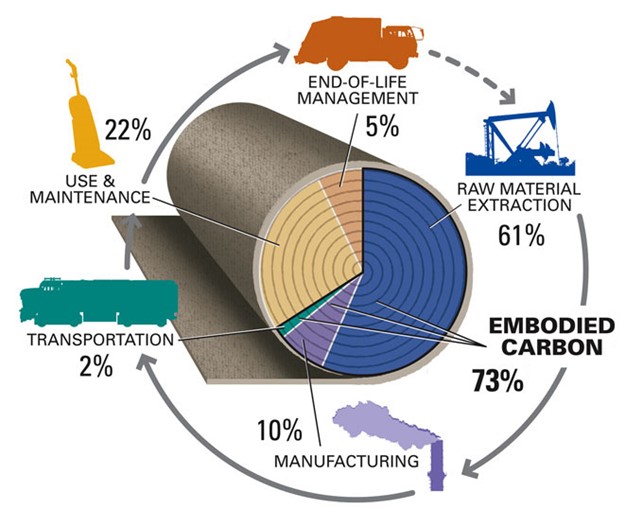As the country continues its push to cut carbon emissions off the back of COP27, we must consider different ways to maintain our momentum in the face of the continuing energy crisis, record greenhouse gas concentrations, increasing extreme weather events and a growing population.
At a global scale, the concentration of human populations within urban centres has paradoxically shifted the role of cities in climate mitigation. Whilst cities are often seen as a source of pollution, contamination and in recent history, infection, they offer opportunities to act as hubs of innovation making the notion of sustainable development fundamental.
According to the United Nations Habitat- mandated to promote socially and environmentally sustainable towns and cities, cities account for 60% of all greenhouse gas emissions worldwide, consuming 78% of the worlds energy yet covering less than 2% of its surface
[1]. Building operations and construction related activities alone are responsible for 39% of global energy related carbon emissions (28% from operational emissions and 11% from materials and construction), which is set to increase as the world’s building stock aims to accommodate rapid rates of urbanisation and population growth
[2].
Figure 1 Embodied Carbon Lifecyle
Source: Build Pass
In the UK, the statistics are more encouraging, attributing only 25% of the nation’s greenhouse gas emissions to the built environment. However
, national policy to date has solely focused on operational emissions (emissions resulting from energy consumption in the day-to-day running of a property) and somewhat bypassed embodied emissions (emissions from the construction process, maintenance and demolition of buildings). These emissions now amount to some 40 to 50 million tonnes of CO2 annually, more than emissions from aviation and shipping combined, questioning the ability of our urban environments to deliver a truly sustainable future
[3].
The recently published Sixth Assessment Report of the International Panel on Climate Change (IPCC) ‘
Climate Change 2022: Impacts, Adaptation and Vulnerability’ states that urban areas
can create opportunities to increase resource efficiency and significantly reduce greenhouse gas emissions. However, delivering a truly sustainable urban environment is not as clear cut as this report suggests.
With 80% of buildings projected to exist in 2050 already built, focusing efforts on new build construction alone cannot provide the net carbon reductions needed to reach net zero
[4]. Rather, we must now seek to better understand, and consider the opportunities of embodied carbon in existing structures as another, yet crucial, means for mitigating the carbon footprint of development. The IPCC report highlights that for established cities, this materialises in the form of “
efficiently improving, repurposing or retrofitting” the existing building stock.
Whilst anything but innovative, this understanding is gaining traction amongst built environment professionals and representational groups who seek to do more to regulate embodied emissions as part of the planning and building process.
Figure 2 Material Life Cycle
Source: Building Green
The National Planning Policy Framework (NPPF, 2021) currently has no requirement for carbon emissions associated with construction to be considered, assessed or limited. Instead, it promotes a presumption in favour of sustainable development (paragraph 10), noting climate mitigation to be a well-represented topic. Whilst current and emerging reforms seem radical, evidence suggests that more needs to be done if the UK is to retain its status as a global leader in decarbonisation.
However, in my view it is not through taxation, restriction or offsetting that embodied emissions can best be mitigated. A better approach would be to standardise the means by which whole life carbon can be coherently and rigorously assessed and subsequently limited across all types of development. This will allow informed choices so that development can take its most sustainable form for its particular circumstances, whether new build or retrofit.
This approach is promoted by the House of Commons Environmental Audit Committee in ‘The Building to Net Zero’ report:
“…the single most significant policy the Government could introduce is a mandatory requirement to undertake whole-life carbon assessments for buildings [...] This policy will incentivise greater retrofitting, the development and use of low carbon materials, and investment in low carbon construction skills”.[5]
For established cities like London, attaining the status of a zero-carbon city requires a shift away from a ‘disposable’ built environment where it is easier and cheaper to demolish and rebuild rather than exploring more sustainable options in the first instance.
The current London Plan (2021) requires major development to be net zero-carbon amongst other criteria. However, only development proposals referable to the Mayor need calculate whole lifecycle carbon emissions and demonstrate actions taken to reduce life-cycle carbon emissions. This demonstrates that standardised measures to limit carbon emissions associated with construction is plausible and should be urgently extended to all forms of development requiring planning permission. Councils are responding to this challenge; some more proactively than others.
Westminster City Council has proposed a new ‘retrofit first’ policy as part of its local plan review. The policy seeks to prioritise the retrofit and refurbishment of existing buildings over ‘unnecessary’ demolition and redevelopment, acknowledging the potential carbon savings as well as the social and economic benefits of retrofit too.
The City of London (Corporation) now promotes (as part of its new Local Plan) the re-use and refurbishment of existing buildings by requiring all major development to demonstrate that London Plan carbon emission and air quality requirements have been met on site, retaining embodied carbon within building structures where feasible. To support the emerging policy, the Corporation has produced a Whole Lifecycle Carbon Optioneering Planning Advice Note. This sets out a framework through which developers can assess and appraise lifetime emissions for different types of development including retrofit or redevelopment (including demolition). The framework aims to make the choices clearer for all developers who will be required to follow the same process to ensure consistency in carbon reporting at pre-app and planning application stages to inform officers and committee members.
Whilst not written into policy yet, these initiatives strive for truly sustainable development in its totality, the success of which is yet to be determined (although it’s likely that other London boroughs will start to follow suit). Consequently, such requirements may become more commonplace in new and emerging policy as pressures to deliver a truly sustainable environment ramp up as we approach critical climate tipping points.
LSE’s latest landmark building project at 35 Lincoln’s Inn Fields, represents this new approach to sustainable development. The scheme proposes between 50% and 70% of materials to be retained, re-used or recycled further targeting zero waste going to landfill, achieving upfront embodied carbon emissions and bettering the GLA aspirational target and emissions captured from exemplar new builds. The project demonstrates, as noted by David Chipperfield, “how the reuse of existing buildings can be seen not as an obligation but as a commitment to a more resourceful and responsible approach to our future, based on intelligent use of existing material and cultural capital”
[6].
Chipperfield, who has recently won the prestigious Pritzker award further notes “we shouldn’t just see [sustainability and retrofit] as a sort of reluctant moral responsibility. It should be meaningful. For instance, with the
LSE project, we tried to make the argument with this not only the right thing to do, it’s actually the more interesting thing to do.”
[7]The proposed redevelopment of the M&S at Marble Arch pending a decision from the Secretary of State, offers to deliver an alternative approach to sustainability. The scheme proposes complete demolition and a total re-build. This would provide a building in the top 1% of sustainability performance in London delivering a carbon payback in 11 years. Whilst the idea of retrofit was at the fore of arguments during the two-week Inquiry, it was made clear that “
no party is asserting that there actually is another, better way of achieving these or substantially similar benefits either through refurbishment or at all. The highest it is put is that there might be”[8].In other words, at Marble Arch, redevelopment might be the most carbon efficient approach.
Going above and beyond what is required of them from planning policy, both development proposals strive to deliver truly sustainable development through what appears to be opposite strategies. One through retrofit, the other demolition and rebuild. However, each delivers an outcome befitting of the 21st century through a process of considering, assessing and limiting both the operational and embodied emissions of development. Despite the varying approach to redevelopment, the desired outcome is the same.
Achieving effective sustainability in new development is becoming an ever more pressing matter in the eyes of planners and developers alike in the face of the climate emergency, however a clear way of making genuinely informed decisions, on the relative merits of different types of development, has yet to emerge. Although the notion of sustainable development is promoted through the current planning system, evidence suggests that much more needs to be done to deliver it and deliver it quickly. This requires the concerted effort of all to deliver big and small changes through truly informed choices that will cumulatively deliver a truly sustainable urban environment.
[1] United Nations Habitat
[2] World Green Building Council
[3] Building to net zero: costing carbon in construction
[4] Building For Change
[5] House of Commons: Building to Net Zero
[6] Building Design
[7] Architects Journal
[8] M&S Marble Arch
Image credit: Mike B. via Pexels





